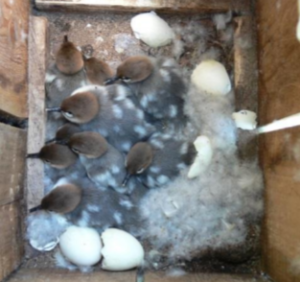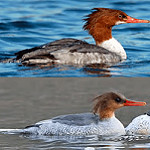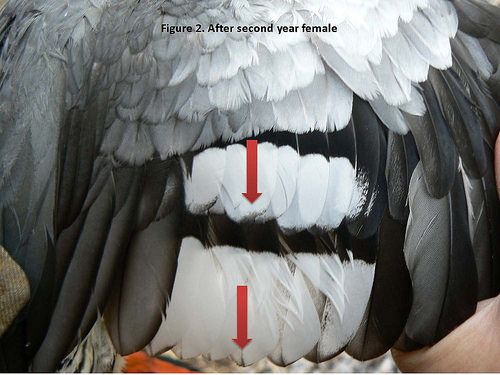Scaly-sided Merganser Task Force
The Scaly-sided Merganser Mergus squamatus has a very small population which is suspected to be undergoing a continuing and rapid decline as a result of illegal hunting, logging and drowning. The species is therefore listed as Endangered under IUCN Red List. Due to a continuing and sharp decline in population, the formation of a task force for the species was requested to provide formal endorsement to international action plans for recovery of the species and the Scaly-sided Merganser Task Force was officially endorsed by EAAFP as a species Task Force (SsM TF) under Anatidae Working Group at EAAFP MoP5 in December 2010.
Goal
To restore the Scaly-sided Merganser Mergus squamatus to favourable conservation status and to remove it from the threatened categories on the IUCN Red List.
Role:
The role of the EAAFP Scaly-sided Merganser Task Force will be to:
- Produce, coordinate and catalyse the implementation of the International Scaly-sided Merganser Single Species Action Plan (SSAP);
- Stimulate and support Range States in the implementation of the SSAP;
- Monitor and report on the implementation and the effectiveness of the SSAP.
Task Force chair
 Prof. Guangchun Lei
Prof. Guangchun Lei
School of Nature Conservation
Beijing Forestry University
Bio: Dr. Guangchun Lei is a Professor of Ecology, and Dean of the School of Nature Conservation, Beijing Forestry University in China. Professor Lei has been appointed as the Vice Chair of the National Wetland Science Committee of China. His previous appointments include the Senior Advisor for Asia and Pacific of the Ramsar Convention Secretariat from 2003 to 2007, and director of freshwater and marine program of WWF China from 1999 – 2002. He has been leading research programs on the conservation and ecology of the migratory water birds, in particular, the Scaly sided merganser, the Lesser White-fronted Geese, and Siberian cranes, in Central Yangtze since 2008.
Task Force Coordinator

Dr. Diana V Solovyeva
Senior Researcher Laboratory of Ornithology
Institute of Biological Problems of the North, Portovaya Str., 18 685000 Magadan, Russian Federation
Tel: +7 (4132) 643304 Fax: +7 (4132) 634463
E-mail: diana_solovyova@mail.ru
Bio: Diana Solovyeva is a Senior Researcher at the Laboratory of Ornithology of the Institute of Biological Problems of the North in Magadan, Russia. She has extensive field experience in Arctic and sub-Arctic regions, particularly with sea ducks and loons, as well as Scaly-sided Merganser, which she has been studying for 15 years. She is experienced in monitoring, tracking and ringing birds and interested in avian energetics as well as wildlife conservation.
International Action Plan for the Conservation of the Scaly-sided Merganser Mergus squamatus
Task Force Member List
- List of members and consultants as of December 2018
- List of members and consultants as of October 2015
Publications
- Home Range and Group Characteristics of Wintering Scaly-Sided Merganser Mergus squamatus in the Watershed of Poyang Lake, China (May 2017)
- Plos One: Using Species Distribution Model to Estimate the Wintering Population Size of the Endangered Scaly-Sided Merganser in China (Feb 2015)
- BioOne: Satellite Tracking of Scaly-Sided Merganser (Mergus squamatus) Breeding in Lesser Xingan Mountains, China (Liu Dong-Ping et al, 2014)
- Geolocating of Scaly-sided Merganser in Bishui Nature Reserve, China (Zeng Qing, 2014)
- Marine moult migration of the freshwater Scaly-sided Merganser Mergus squamatus revealed by stable isotopes and geolocators (Diana Solovyeva et al, Oct 2014)
- Amurian zoological journal: Broods of the Scaly-sided merganser (Mergus squamatus) in the river basin of Kievka and adjacent territories (Primorskii Krai) (in Russian, June 2014)
- WWT: About EAAFP Scaly-sided Merganser Task Force (July 2013, 4.16 MB)
- Mergus squamatus (GOULD, 1864) – A way to breeding habitat restoration (D.V. Solovyeva et al, June 2013, 2.21 MB)
- Chinese Birds: A survey to the distribution of the Scaly-sided Merganser (Mergus squamatus) in Changbai Mountain range(China side) (Peiqi Liu et al, 2010, 4.69 MB)
- Scaly-sided Merganser boat survey guideline (in Russian)
Featured Activities
Working to conserve an endangered river-spirit: the Scaly-sided Merganser, 2022, Republic of Korea
This project called research and conservation actions for Scaly-sided Mergansers and their habitats in the Republic of Korea by Dr. Nial Moores was conducted in 2022 and was funded through the Small Grand Fund 2022 for Working Groups / Task Forces. Check the article here.
Artificial Nests Program for the Endangered Scaly-sided Merganser in Russia: A brief report of the 2021 results – Eaaflyway
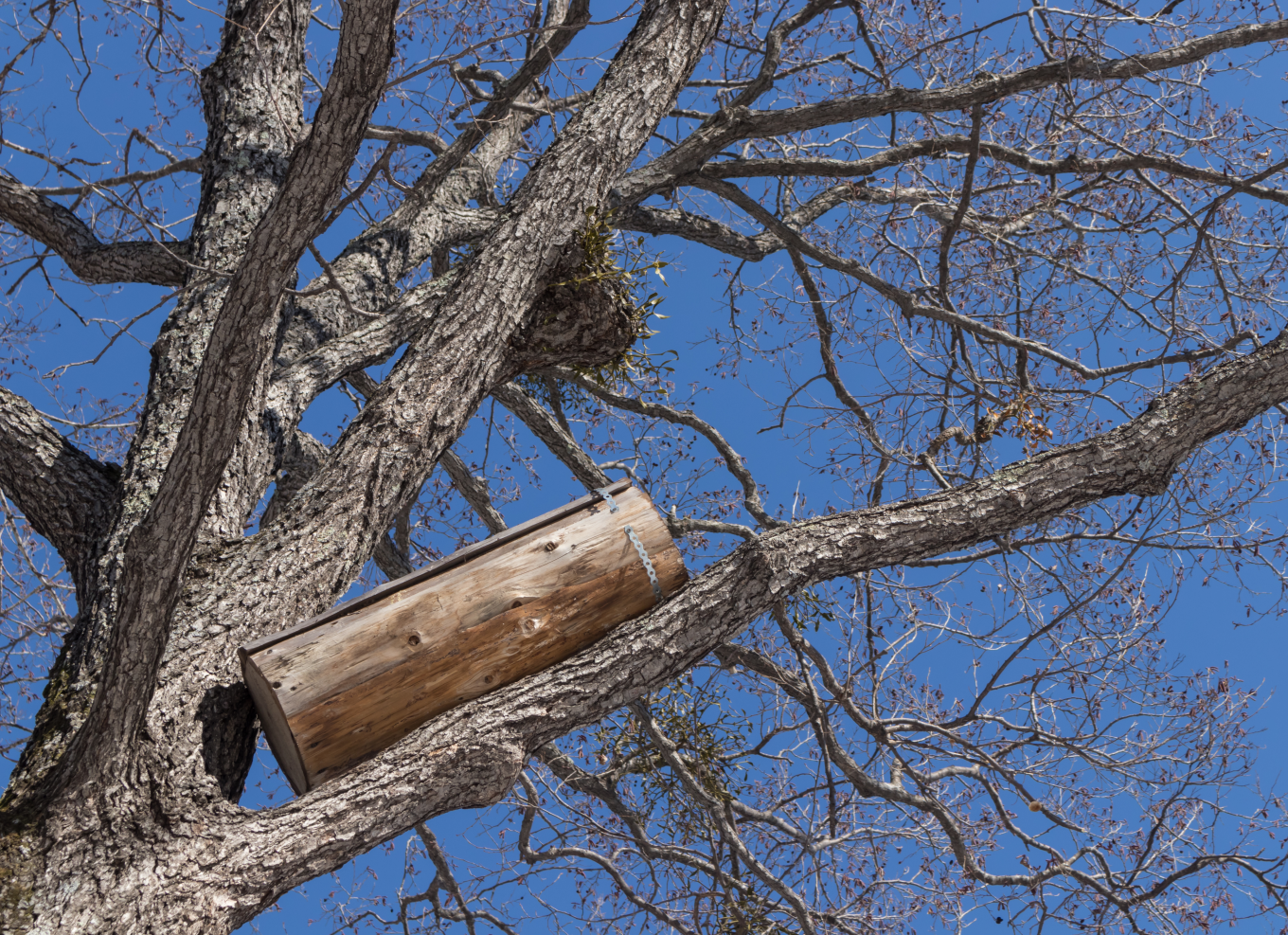
Artificial Nests Program for the Endangered Scaly-sided Merganser in Russia: brief report of the 2020 results
A total of 308 artificial nest sites (ANS) have been placed and maintained in Russia for 20 years. At present the project team are trying to maintain actively-used ANS, 17 active nests of Scaly-sided Merganser documented in ANS in 2020. Check the results [here].
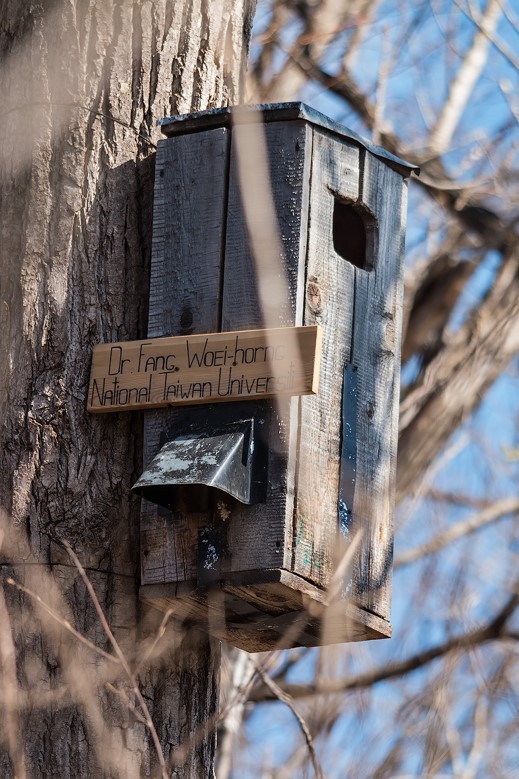 Giving a home to Endangered Scaly-sided Merganser – launch of donation webpage
Giving a home to Endangered Scaly-sided Merganser – launch of donation webpage
The Scaly-sided Merganser is listed as Endangered in the IUCN Red List of Threatened Species. At present, the population has declined to around 2,400-4,500 mature individuals. Their main habitats are located in temperate East Asia, especially along the rivers in Primorye (Russia) which are the core breeding areas. The declining population trend is mainly due to the loss of habitats (neritic, forest, wetlands), human disturbance, as well as pollution from industrial and agricultural effluents.
Single Species International Action Plan 3-rd Workshop will be held on 5-7 December, 2018 in Changde, China
This workshop is for: (1) fulfillment of the Single Species International Action Plan; (2) improvement for national Action Plans; (3) coordinate surveys within key states; and (4) further cooperation of research and conservation.
Small grants application for Conservation of Scaly-sided Merganser in 2018
Scaly-sided Merganser Task Force received financial support form Augsburg Zoo and Toledo Zoo for the projects aimed to conserve Scaly-sided Merganser in 2018. Task Force members and other groups are welcome to submit the free-form application for small grants by 20 December 2017, e-mail diana_solovyova@mail.ru (Diana V Solovyeva, Scaly-sided Merganser Task Force Coordinator).
Survey on wintering Scaly-sided Merganser in China
![flock_of_adult_Xinyang_Du_Qing[1]](https://eaaflyway.net/wp-content/uploads/2017/12/23483595396_726e451d94_m.jpg)
The Scaly-sided Merganser Census in China 2014-2015, led by the Chinese Bird Watching Societies Network (China Birdwatching Association) and sponsored by the Alashan SEE Foundation, was carried out in more than 150 different cities and counties of 19 provinces (including autonomous regions). And this year, the Census 2015-2016 will cover up to 21 provinces (including autonomous regions) in China. Find more
Scaly-sided Merganser boat survey guideline (in Russian)
During breeding period the Scaly-sided Merganser occurres on the main streams of fast flowing mountain rivers of Far East Russia and NE China. It shows linear distribution along rivers. Boat surveys along main streams provided satisfactory estimations of breeding densities (in pairs per km) and brood densities (in broods per km). Sex-age groups are possible to identify during boat survey. Method of boat was utilized to estimate world population of Scaly-sided Merganser in both Russia and China during 2003-13 (Solovyeva et al 2014). Read guideline
Ageing of Scaly-sided Merganser females
Ageing of females is possible when we catch incubating hens on their nest. It is very important to age females to monitor age-dependent nesting chronology and productivity. Read more
Single Species International Action Plan workshop in 2015
Scaly-sided Merganser Task Force held a Single Species International Action Plan workshop on 23-25 September 2015 in Vladivostok, Russia. This meeting was held five years after the first workshop. Participants (1) further developed the Single Species International Action Plan; (2) provided directions to the national Action Plans; (3) discussed coordination of surveys within key states; and (4) provided direction to conservation breeding and researches in captivity. On 26-28 September 2015 they visited Kievka River, a key study site of the Scaly-sided Merganser project. They also (1) officially opened the Visitor Centre of the Scaly-sided Merganser Field Station in Kishinevka village; and (2) trained refuge staff in erecting artificial nests. Find more
Breeding Population Range, Estimations and Trends
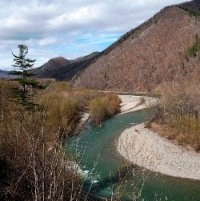
The Scaly-sided Merganser Mergus squamatusbreeds in Far Eastern Russia, north-east China and probably in DPR Korea. The breeding range stretches from southern Changbai Mountains in China to northern Sikote’-Alin Mountains in Russia. The species’ recent breeding range was delineated in Russia and it was found to be significantly smaller than suggested by old literature. Old information sources were re-checked and misidentification of mergansers was found to be the reason for the incorrect range in the past.
Scaly-sided Merganser in the Republic of Korea
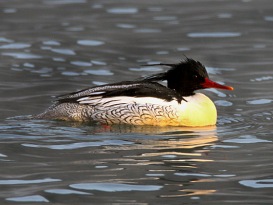
The Scaly-sided mergansers Mergus squamatus was described as a rare and little known species in the first major review of the Korean avifauna, with the earliest record for the ROK being one collected near Seoul in November 1927 (Austin 1948). Subsequently, there was only a single published record until the mid-1990s when survey effort of suitable habitat increased. Park (2002) listed observations in four provinces between 1995 and 2001.
Scaly-sided Merganser Wintering in China
The information of this species on its wintering grounds remains poor. For the first time, we analyzed published and unpublished data on the wintering distribution in China and smaller numbers in Korea. In addition, we generalize habitat characteristics and threats to this species on the wintering grounds, based on field surveys.
Geolocation
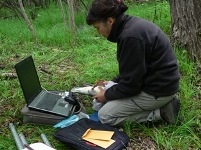
The winter distribution of scaly-sided mergansers Mergus squamatus was poorly known, although small numbers occur on rivers and fresh water bodies in southern and central China (He et al, 2002, 2006, BirdLife International 2001). Very small numbers winter in Japan, South Korea and Taiwan, with scattered records from Myanmar, Thailand and northern Vietnam (BirdLife International 2001). Recent provision of artificial nest cavities for scaly-sided mergansers in Primorye, Far-East Russia have provided new insights into the breeding biology and ecology of the species, allowing unprecedented access to breeding hens during egg-laying and incubation.
Artificial Nest Program and Effect of Incubator
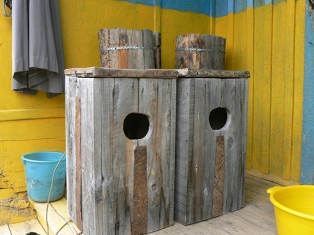
The artificial nest program was started in 2000. Rivers in the Sikhote-Alin’ mountain range were chosen because they are a stronghold for breeding Scaly-sided Mergansers, are relatively accessible, and are relatively free from pollution. During 2000–12, 196 artificial nests of three types were erected along 13 rivers in Primorye. Rivers with logged and un-logged banks were selected to test if nest sites were limiting on logged rivers.
Instruction to erecting of Scaly-sided Merganser artificial nest
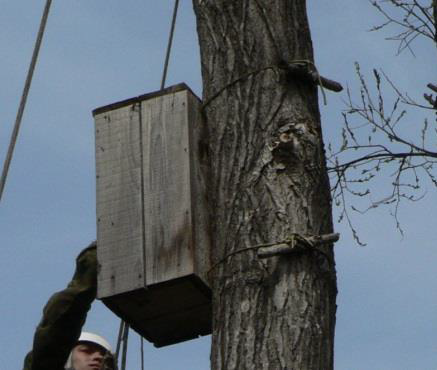
Scaly-sided Merganser is extreme cavity nester. From the other hand the species inhabits only fast flowing clean rivers of third to seven order. Upper 40 km of river is not in use by this duck. Occurrence on flood-plain ponds and small creeks is irregular. Artificial nest site [ANS] occupation depends on forest quality on river banks. On the rivers with logged forest occupation of ANS is significantly higher than on un-logged rivers (Solovyeva et al, 2013). Thus artificial nest program at un-logged habitats is useless. [23/09/2014] Read More
- Download the full article (Chinese Version) (Oct 2014)
- Download the full article (Russian Version) (Oct 2014)
- Download the full article (English Version) (Sept 2014)
Video: Artificial nest programme for the endangered scaly-sided Merganser: advantages and disadvantages
Captive Breeding Programme
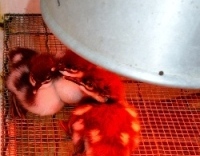
The scaly-sided merganser has been maintained in animal collections in Europe since 2002, and currently the population stands at 27 individuals. Successful breeding of this species has occurred at many private wildfowl breeding facilities, and a limited number of zoological parks and conservation centers, and the information which has been collated may aid the mergansers in the event that artificial propagation is necessary to the survival or continued recovery of the species overall.
Scaly-sided Merganser in North America

In 2004, the International Wild Waterfowl Association (IWWA) conducted a survey to assess the state of captive waterfowl collections in the United States. As a result of this survey, the IWWA completed an importation from Europe of several waterfowl species whose populations were considered critically low. Scaly-sided Mergansers were included in this import, which took place in 2007. Soon after, the first North American breeding of the Scaly-sided Merganser took place in 2009 at the Sylvan Heights Bird Park’s Breeding Center in Scotland Neck, North Carolina. Later that year, staff from the Breeding Center were awarded with an IWWA Breeding Award in recognition of their achievement. [28/11/2014]
A two-year survey on the Scaly-sided Merganser in Changbai Mountains, China
The Changbai Mountain range (China side), is a very important and a major breeding ground of the Scaly-sided Merganser in China. Given the absence of continuous studies on the breeding population of the Scaly-sided Merganser in the Changbai Mountain range since the 1990s, the distribution and current status of this species is not well known in this area. With the guidance of methodology from Drs. Solovieva and Hughes, we made continuous and repeated surveys of the breeding population of the Scaly-sided Merganser in the Changbai Mountain range during the spring and summer in 2008 and 2009.

